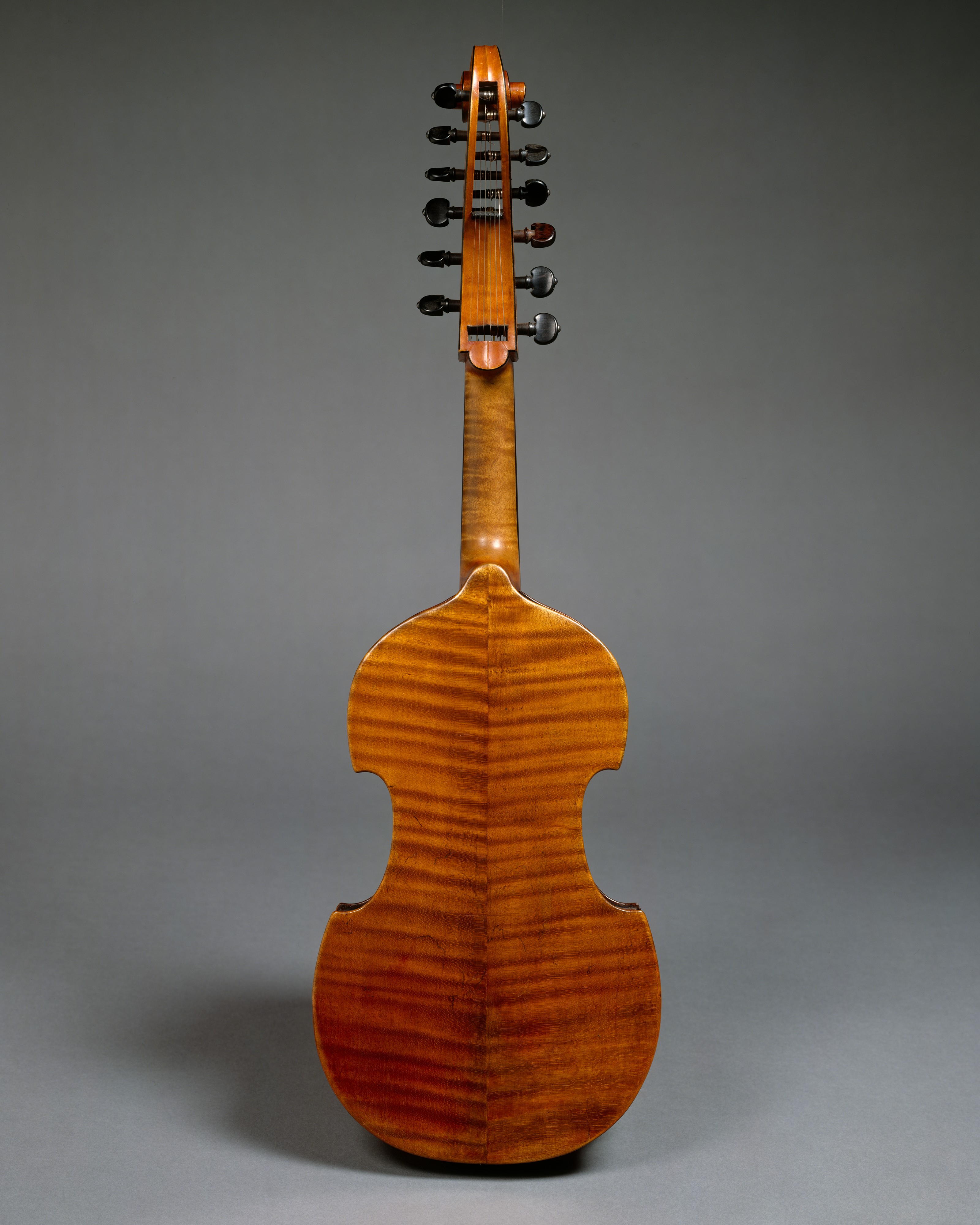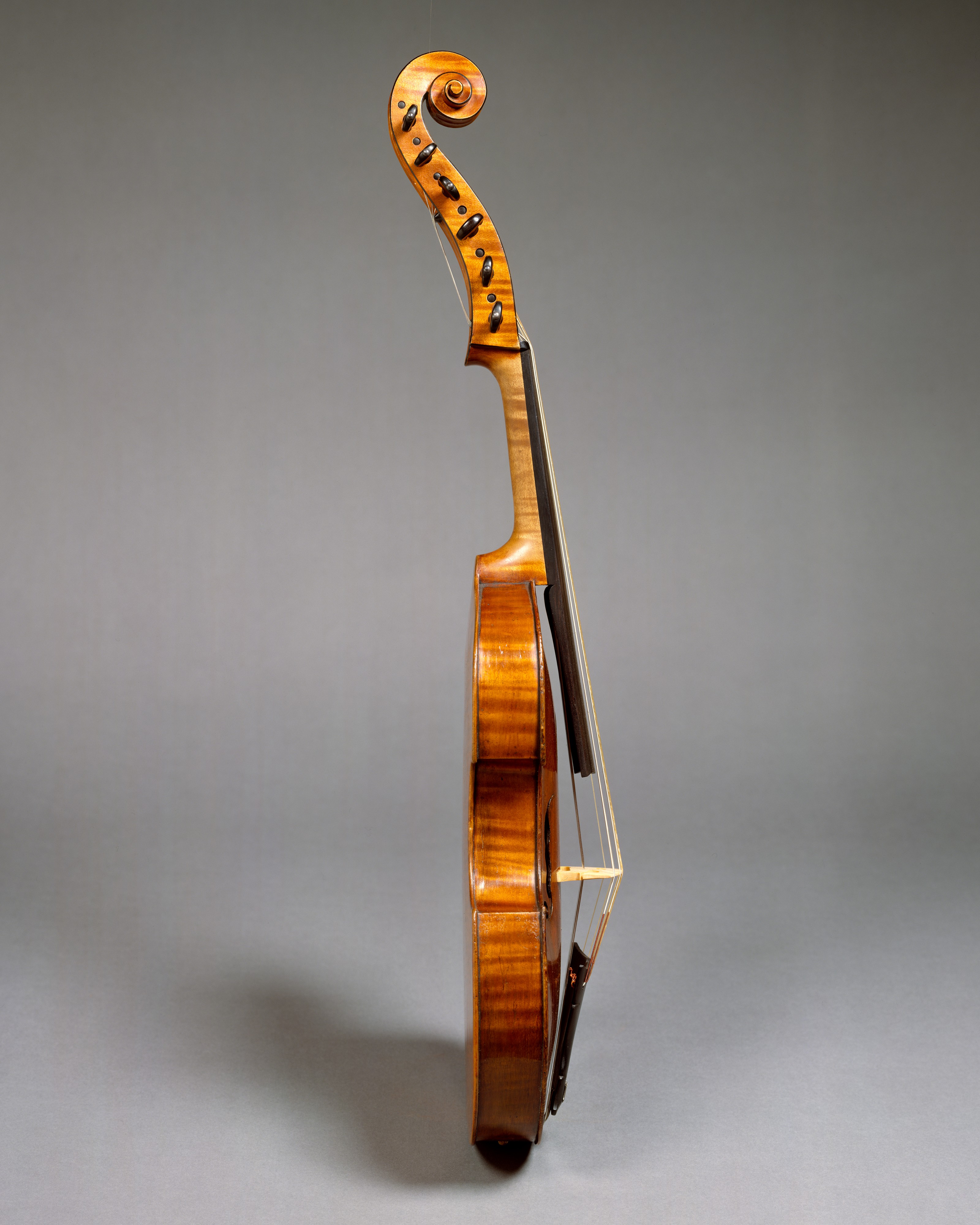Viola d'Amore
Joseph Gagliano (1742–1820) Italian (Naples)
Not on view
The viola d'amore, or viola "of love," is a bowed stringed instrument which gained great popularity in the eighteenth century. Much of its history, including the derivation of its name, is unknown. It has many characteristics of the viol family such as a flat back, ribs that are flush with the top and back, and a rosette in addition to soundholes. Yet, like a violin, it is unfretted and held under the chin while played. Violas d'amore typically have seven playing strings, though instruments with other numbers of strings are not unusual. Perhaps the most distinguishable characteristic of the viola d'amore is the presence of sympathetic strings, which are not played but located behind the bowed strings and vibrate "in sympathy." The sympathetic strings contribute to produce a tone that is clear, and often described as "silvery." The sympathetic strings also contribute to creating a more resonant sound with a longer decay. Sympathetic strings are found on several European folk instruments, including the Swedish nyckelharpa and the Norwegian hardanger fiddle. They are prevalent on stringed instruments from India, most notably the sitar. The viola d'amore was popular with eighteenth-century composers and can be found in the works of J. S. Bach, Vivaldi, Telemann, Haydn, and Locatelli.
Joseph (also known as Giuseppe) was a member of the famed Neapolitan Gagliano family of luthiers. He was a grandson of the founder of the dynasty, Alessandro, and son of Nicola (1), regarded as the finest builder in the family. In later life, Giuseppe worked with his brother Antonio.
Description: Viol outline, overhanging top and back, scroll surmounts pegbox, six bowed, six sympathetic strings, flame soundholes, rosette carved in top beneath fingerboard, silver plaque on tailpiece, fittings and neck not original; fragment missing from left soundhole.
Due to rights restrictions, this image cannot be enlarged, viewed at full screen, or downloaded.
This artwork is meant to be viewed from right to left. Scroll left to view more.




